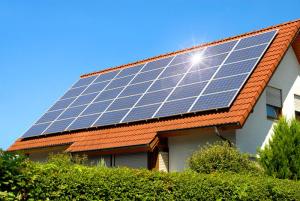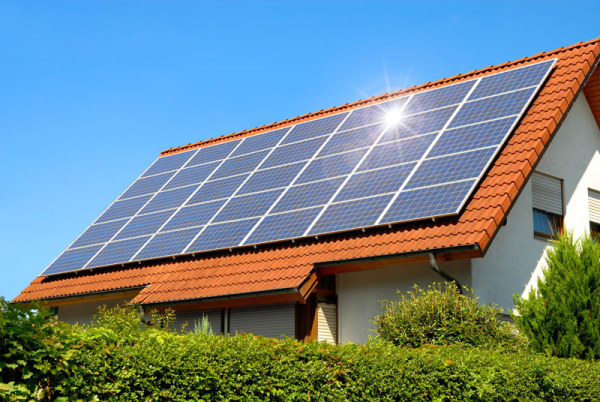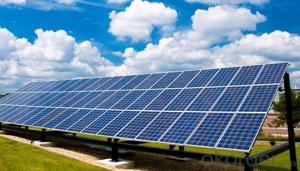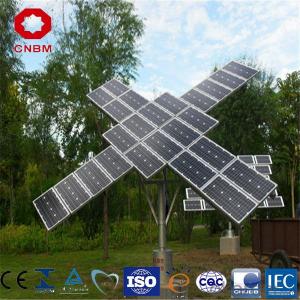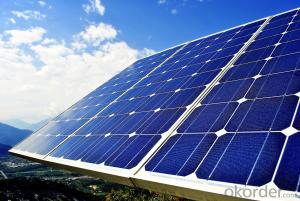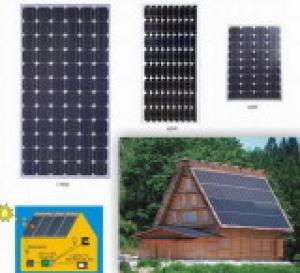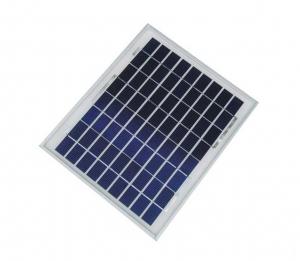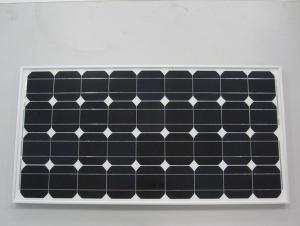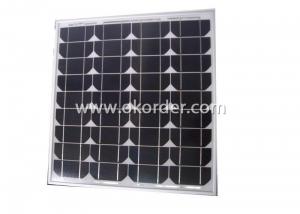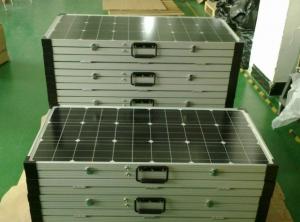Best Solar Panels for Rv Boondocking Poly Solar Module1
- Loading Port:
- Tianjin
- Payment Terms:
- TT OR LC
- Min Order Qty:
- -
- Supply Capability:
- 300mw watt/month
OKorder Service Pledge
OKorder Financial Service
You Might Also Like
Solar Module
ABOUT YINGLI GREEN ENERGY
Yingli Green Energy Holding Company Limited (NYSE: YGE) is one of
the world’s largest fully vertically integrated PV manufacturers, which
markets its products under the brand “Yingli Solar“. With over 7.0GW
of modules installed globally, we are a leading solar energy company
built upon proven product reliability and sustainable performance. We
are the fi rst renewable energy company and the fi rst Chinese company
to sponsor the FIFA World CupTM.
PERFORMANCE
- High effi ciency, multicrystalline silicon solar cells with high transmission
and textured glass deliver a module effi ciency of up to 16.0%,
minimizing installation costs and maximizing the kWh output of your
system per unit area.
- Tight positive power tolerance of 0W to +5W ensures you receive
modules at or above nameplate power and contributes to minimizing
module mismatch losses leading to improved system yield.
- Top ranking in the “TÜV Rheinland Energy Yield Test” and the
“PHOTON Test” demonstrates high performance and annual energy
production.
RELIABILITY
- Tests by independent laboratories prove that Yingli Solar modules:
Fully conform to certifi cation and regulatory standards.
Withstand wind loads of up to 2.4kPa and snow loads of up to
5.4kPa, confi rming mechanical stability.
Successfully endure ammonia and salt-mist exposure at the highest
severity level, ensuring their performance in adverse conditions.
- Manufacturing facility certifi ed by TÜV Rheinland to ISO 9001:2008,
ISO 14001:2004 and BS OHSAS 18001:2007.
WARRANTIES
- 10-year limited product warranty1.
- Limited power warranty1: 10 years at 91.2% of the minimal rated power
output, 25 years at 80.7% of the minimal rated power output.
1In compliance with our Warranty Terms and Conditions.
QUALIFICATIONS & CERTIFICATES
IEC 61215, IEC 61730, MCS, CE, ISO 9001:2008, ISO 14001:2004, BS OHSAS
18001:2007, PV Cycle, SA 8000
ELECTRICAL PERFORMANCE
Electrical parameters at Standard Test Conditions (STC)
Module type YLxxxP-29b (xxx=Pmax)
Power output Pmax W 260 255 250 245 240
Power output tolerances ΔPmax W 0 / + 5
Module effi ciency ηm % 16.0 15.7 15.4 15.1 14.8
Voltage at Pmax Vmpp V 30.3 30.0 29.8 29.6 29.3
Current at Pmax Impp A 8.59 8.49 8.39 8.28 8.18
Open-circuit voltage Voc V 37.7 37.7 37.6 37.5 37.5
Short-circuit current Isc A 9.09 9.01 8.92 8.83 8.75
Electrical parameters at Nominal Operating Cell Temperature (NOCT)
Power output Pmax W 189.7 186.0 182.4 178.7 175.1
Voltage at Pmax Vmpp V 27.6 27.4 27.2 27.0 26.8
Current at Pmax Impp A 6.87 6.79 6.71 6.62 6.54
Open-circuit voltage Voc V 34.8 34.8 34.7 34.6 34.6
Short-circuit current Isc A 7.35 7.28 7.21 7.14 7.07
STC: 1000W/m2 irradiance, 25°C cell temperature, AM1.5g spectrum according to EN 60904-3.
Average relative effi ciency reduction of 3.3% at 200W/m2 according to EN 60904-1.
NOCT: open-circuit module operation temperature at 800W/m2 irradiance, 20°C ambient temperature, 1m/s wind speed.
OPERATING CONDITIONS
Max. system voltage 1000VDC
Max. series fuse rating 15A
Limiting reverse current 15A
Operating temperature range -40°C to 85°C
Max. static load, front (e.g., snow) 5400Pa
Max. static load, back (e.g., wind) 2400Pa
Max. hailstone impact (diameter / velocity) 25mm / 23m/s
CONSTRUCTION MATERIALS
Front cover (material / thickness) low-iron tempered glass / 3.2mm
Cell (quantity / material / dimensions /
number of busbars)
60 / multicrystalline silicon / 156mm x 156mm / 2 or 3
Encapsulant (material) ethylene vinyl acetate (EVA)
Frame (material / color / anodization color /
edge sealing) anodized aluminum alloy / silver / clear / silicone or tape
Junction box (protection degree) ≥ IP65
Cable (length / cross-sectional area) 1000mm / 4mm2
Plug connector
(type / protection degree) MC4 / IP67 or YT08-1 / IP67 or Amphenol H4 / IP68
PACKAGING SPECIFICATIONS
Number of modules per pallet 29
Number of pallets per 40' container 28
Packaging box dimensions
(L / W / H) 1700mm / 1135mm / 1165mm
Box weight 568kg
Unit: mm
• Due to continuous innovation, research and product improvement, the specifi cations in this product information sheet are subject to change
without prior notice. The specifi cations may deviate slightly and are not guaranteed.
• The data do not refer to a single module and they are not part of the offer, they only serve for comparison to different module types
- Q: Hi, i want to please a solar panel in Lima Peru, my Latitude is -2 and longitude -77. I understand that since i am in the southern hemisphere, my panel should be pointing north. However, i am using a program called pvdesigner, and according to this, y should face my panel with and azimuth of 00degrees (0 = south) and a tilt of 60degrees. Does this make any sense?thanks
- Typically, solar panels are installed facing the same as your latitude = 2 degrees to the North measured from horizontal. 60 degrees from vertical = 30 degrees from horzontal will give almost as much power in June as in December = beginning of Summer. You can face your panels straight up = zero tilt from vertical = better for December/ not so good in June. Usually, the same tilt as your North facing roof is best as it simplifies installation and reduces wind loading. Shade from trees etc will much reduce the power you get. Neil
- Q: Ok so i can have a problem i have two 5 watt 2 volt solar panels a 2 volt battery and a 400 watt ac 2 volt dc inverter i believe im only getting 5 watts from from my solar panels thats the equivalent of one is there any way i could get full voltage from my solar panels without theoretically burning my wallet.. please help
- I think you need to take some basic courses on electricity. Usually, 8 volt solar panels are required to charge 2 volt batteries. The voltages of photovoltaic cells are set by the material they are made of, only current changes. If you hook up a 2 V solar panel to a 2 V battery, no current will flow, nothing would get charged. You would need some elaborate DC to DC voltage converters to charge a 2 V battery from 2 V solar panels. Solar panels can be connected in parallel or in series, as you've made the mistake of buying 2 V solar panel, you would have to wire them in series and have a charge controller that could limit the voltage of the charge. Did it ever occur to you that two 5 watt solar panels would not be able to provide the power needed by a 400 watt inverter? You're just running off your battery with your set up. Solar power is expensive power, you can not have solar without burning a hole in your wallet.
- Q: Can solar panels be used in areas with high levels of dust storms?
- Yes, solar panels can be used in areas with high levels of dust storms. However, it is important to regularly clean and maintain the panels to ensure optimal performance. Dust storms may temporarily reduce the efficiency of solar panels, but with proper care and regular cleaning, they can continue to generate electricity effectively.
- Q: Can solar panels be used to power a farm?
- Yes, solar panels can be used to power a farm. By harnessing the power of the sun, solar panels can generate electricity that can be used to run various farm operations such as irrigation systems, grain dryers, electric fencing, and even power agricultural machinery. This renewable energy source not only reduces reliance on fossil fuels but also helps farmers save on energy costs while promoting sustainability.
- Q: Can solar panels be installed on electric fences?
- Yes, solar panels can be installed on electric fences. The panels can provide the necessary power to keep the electric fence operational without relying on traditional electrical sources.
- Q: Got a small project here in a remote location. There is to be a 2 volt deep cycle battery, the equipment to be powered from battery and solar panel to charge battery. The 2 volt battery puts out 55 AH. the max constant power draw from the equipment to be powered is 7.9 watts. Will a 30 watt panel at 2 volts be enough to run this system during sunlight and charge the battery for the equipment to run overnight?And, at 55 AH, how long can I keep a constant draw of 7.9 watts without a recharge?Thanks to all the input!
- o work out the wattage correctly, the panel needs to be sized according to how much power you are going to use. (Later on you're going to need a bit of info on each electrical item you need to be solar powered).
- Q: how much power is generated with solar panels? also please give me links for that information.and how much would the costs be for this alternative energy source?
- If you put 'solar world statistics' into a search engine, you will discover that there are many statistics that are being heavily contested. Picking up the truth from among hype is the task. Solar panels typically have a rated maximum output of about 0 watts per sq metre. But actual delivery to grids of kWh would point to a number closer to 4 watts / sq M. on a 24 hour basis. Grid management is thus cautious about yield claims when history points to only /8 of rated maximum output. There may be some inappropriate expectations, when a solar roof is first powering the building, and only selling excess to the grid.
- Q: Can solar panels be installed on historical landmarks or monuments?
- Yes, solar panels can be installed on historical landmarks or monuments. However, it requires careful planning and consideration to ensure that the installation does not compromise the integrity or aesthetics of the site.
- Q: Can solar panels be used in areas with high levels of noise or vibration?
- Yes, solar panels can be used in areas with high levels of noise or vibration. Solar panels are designed to withstand various environmental conditions, including noise and vibration. However, it is important to ensure that the mounting structure and installation are done properly to minimize any potential impact on the panels' performance.
- Q: trees vs solar panels who would win?
- hmmmmm trees would squash em and solar pannels would electric cute em............... :)
Send your message to us
Best Solar Panels for Rv Boondocking Poly Solar Module1
- Loading Port:
- Tianjin
- Payment Terms:
- TT OR LC
- Min Order Qty:
- -
- Supply Capability:
- 300mw watt/month
OKorder Service Pledge
OKorder Financial Service
Similar products
Hot products
Hot Searches
Related keywords
